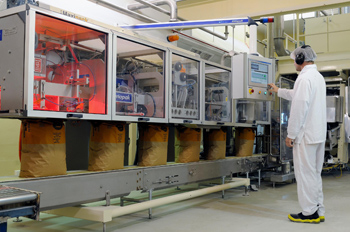Warrnambool: land of cheese and ERP

Sometimes old is good, but in the case of the Warrnambool Cheese and butter factory, management felt that when an old system ran the risk of alienating employees who've grown used to user friendly Windows-type systems, it's time to make a change.

(Credit: Warrnambool Cheese and Butter Factory)
Warrnambool Cheese and Butter factory is an Aussie-owned company which makes dairy products. It had been using enterprise resource planning system JD Edwards World for fifteen years to help run the business. But when questions came up about how long it was going to be supported and the alienating qualities of the old-style interface, management looked into getting something new.
"It's a traditional character-based screen, a so called green screen, although it's actually yellow and green on black," Warrnambool's project manager ICT Ian Spencer said.
"We were concerned that World was fine for the in-house experts who had been using it for years. But for people who came along more recently, it was unlike anything they'd ever seen before, because they were predominantly accustomed to Windows-looking products."
The look and feel of the program was not thought to be compatible with how Warrnambool wanted to be. So when the company released a five-year ICT strategic plan in April 2007, upgrading the outdated system was high on the list.
The company briefly looked into SAP, but since it was already licensed for JDE world and it had related skills in house, it decided to remain with JDE, upgrading to JDE EnterpriseOne, Release 8.12 with some extensions into sales distribution and purchasing.
"It was easier this way; It was thought to be more cost effective than changing to something completely different," he said.
Finding skills for a new system would have been more difficult in Warrnambool, over three hours from Melbourne, than in a big city, he said.
"We wanted to modernise our activities but without throwing the baby out with the bathwater," he said.
JDE also had a strong user base in the food and beverage business, according to Spencer.
The upgrade commenced in July of 2008 after Spencer was hired, and went live in March 2009.
The factory had to upgrade its configuration to fit the new system and it had to train a whole lot more people on how to use the system.
"It suffered from the things that projects often do — that you can't seem to get enough of the right people at the right time, and you never seem to do enough testing," he said. "[It was] sometimes quite stressful, but generally overall satisfactory and satisfying."
Warrnambool hired Oakton which then had an arm to handle JD Edwards migration.
"Towards the end of our project the Oakton group decided they didn't want to be in JDE consulting anymore," he said. People working on the project were going to leave Oakton, he said.
They remained until the project was finished, and it hadn't got in the way of them acting professionally, Spencer said, but he added that it had been a bit disturbing on both sides.
The benefits
The company had around 30 people using JDE World in accounting and some aspects of sales production. Now, the company has over 100 licensed users.
"We now have the bulk of our purchasing requisitioning through to purchase order through to accounts payable in JDE," Spencer said.
Previously, purchasing was carried out using manual or electronic order books, spreadsheets or over the phone.
"We have [now] managed to focus the bulk of the transactions through JDE," he said. "We have already seen benefits to a fair degree."
The data that comes from the new system allows better control over the purchasing and sales process. For example, the company could go into accounts payable and look on a transactional basis at what the company was buying and when.
"We're starting to drill down into the transactions to say 'What happened with this transaction? Why did we pay that for this product? Are there opportunities for tendering where we don't currently?'" Spencer said.
Cost savings and better quality products are two of the benefits which Spencer said come from the additional knowledge data.
The company now intends to upgrade its business intelligence, inventory management, environmental management and customer relationship management systems.